As simple as pillow stuffings may seem, they have actually become quite complex. This follows from market demand, technological innovations, and the latest trends. Consequently, technology ensures that these stuffings now produce different sleep experiences.
Because of varying needs, the right pillow choices have become important for comfort. As a result, sellers should ensure that they cater to the diverse sleeping requirements of customers.
Read on for a guide to the key types of pillow stuffings on the market today, and how to source the options that your buyers will love!
Table of Contents
Market growth for pillow stuffings
Understanding pillow stuffings and fillings
The bottom line
Market growth for pillow stuffings
Projections by Market Research Future are that the pillow market will grow to USD 11.65 billion by 2031, while the compound annual growth rate (CAGR) between 2023 and 2031 is anticipated to be 7.23%.
Google Ads shows that keyword searches for pillow stuffings in December 2022 were 12,100. By November 2023, this search volume had risen to 14,800, a 22.31% increase.
Most demand for pillows is from highly populated countries.
Drivers behind pillow sales include sleep, therapeutic, and decorative purposes.
Understanding pillow stuffings and fillings
This pillow market covers materials, features, shapes, pillow stuffings or fillings, and applications. Pillow coverings include cotton, bamboo, linen, polyester, and other textiles. Depending on the cover, they offer breathability, cooling, hypoallergenic, and other features.
Regarding size, pillows can be rectangular, u-shaped, wave, or convex, while pillow applications include sleep, travel, decorative, bedding, and many more.
This article focuses on the most popular pillow stuffings for sleep and bedding.
Memory foam or viscoelastic foam
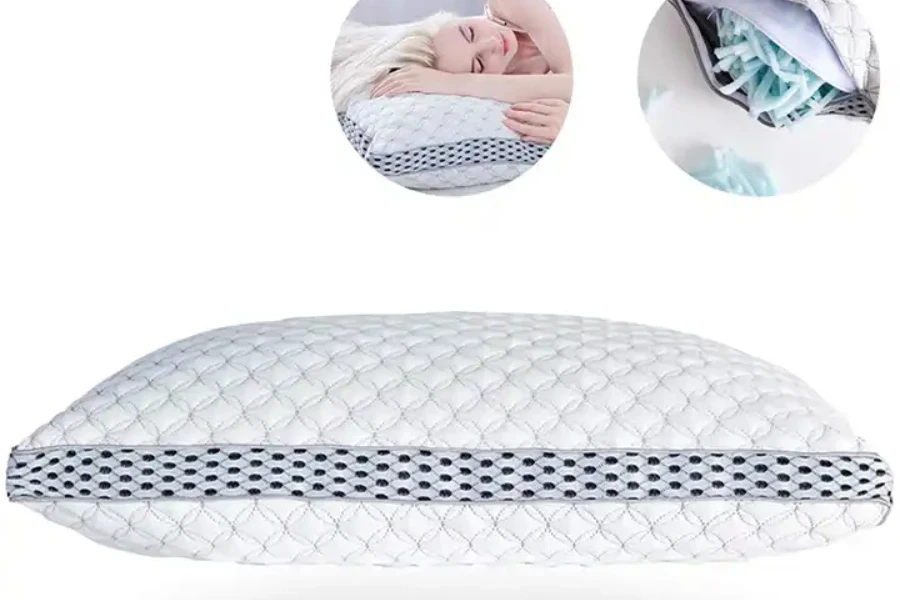
Memory foam pillow stuffings come in two forms – shredded and block. Shredded memory foam is flexible. Users can shape these pillow stuffings easily. Because of the shredded characteristics, these stuffings are breathable. If they have a zipper, they can be customized to suit individual loft and firmness needs.
Block memory foam fillers are more condensed. This density provides significant support. But it also means the foam takes longer to revert to its previous shape when the sleeper changes position. Likewise, the foam density tends to retain heat for longer periods.
Because viscoelastic foam can be pretty warm, gel blends and pillow coverings help create cooling effects. Memory foam pillow fillings are durable and suitable for medium-market end users. For example, hostels, hospitals, hotels, and individuals are appropriate markets for these products.
Latex pillow stuffing
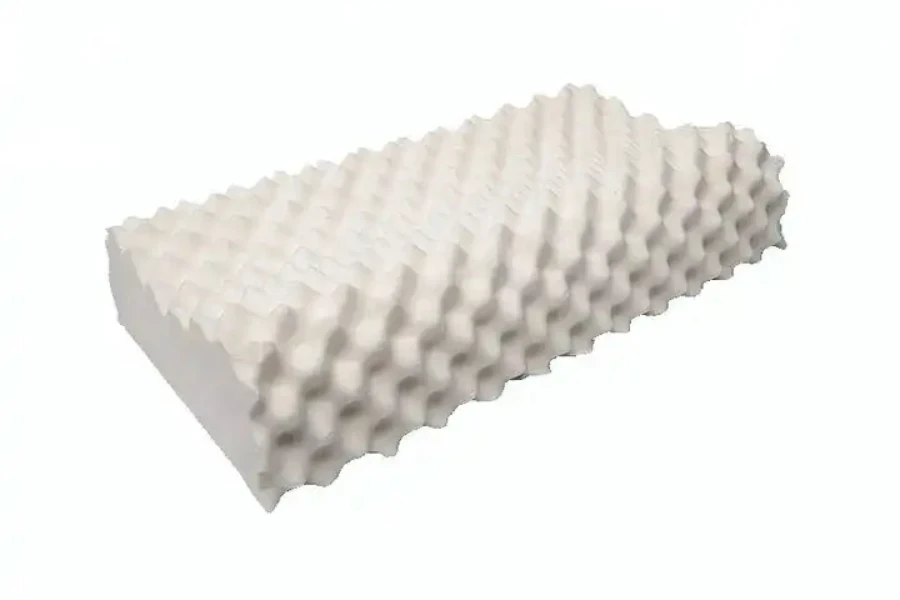
Latex is a natural rubber processed from trees to create foam rubber flakes for stuffing. Because of its nature, this product is aerated, breathable, cool, comfortable, and hypoallergenic.
Latex pillows are heavy but flexible. These qualities make this stuffing more comfortable than most synthetic microfiber pillows.
Also, the density of latex pillows provides as much support as memory foam, but they are softer and more malleable. Latex is almost as soft as down pillow stuffings.
Latex pillow fillings are also durable and are good investment options for hotels and individuals.
Microfiber, hollow fiber, polyester fiberfill
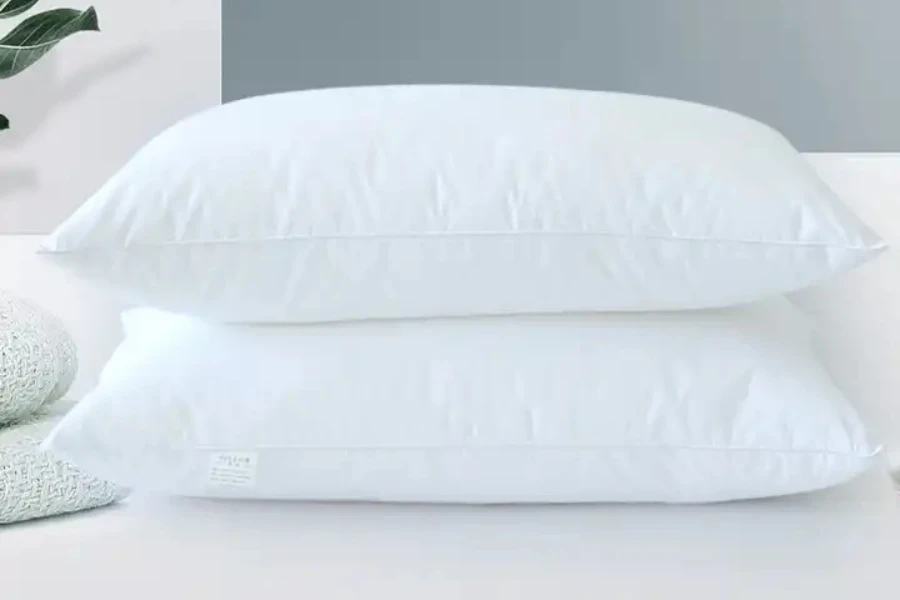
All these names refer to synthetic fibers with affordable stuffings. They are also less comfortable and durable than pillows made from other materials.
Because of their brief lifespan, polyester fiber fillings and similar products suit the lower-end market for affordability and frequent replacement. These buying behaviors line up with high volume, regular sales. Sellers should consider these aspects when stocking hollow fiber pillows.
Down pillows
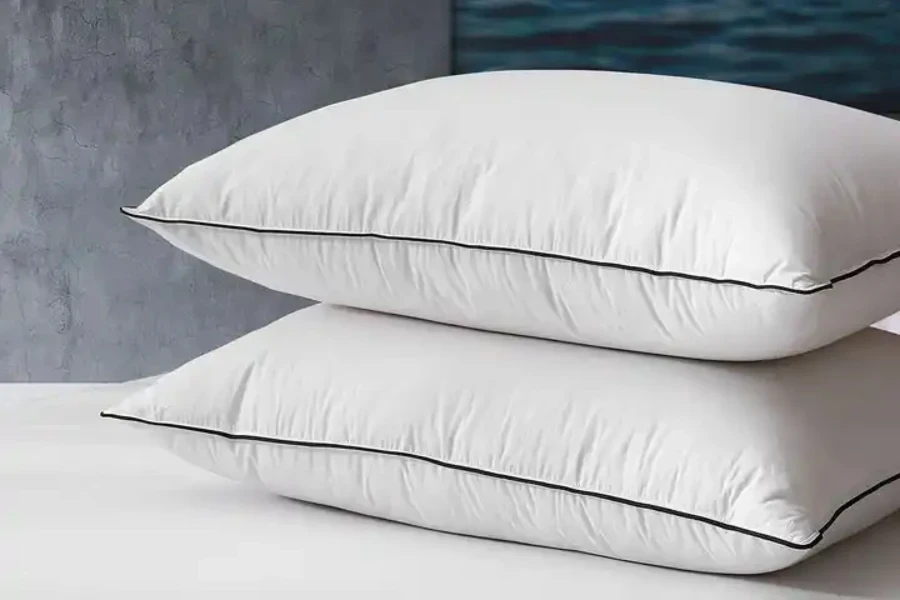
Goose or duck-down pillows are soft, comfortable, and luxurious. They offer an excellent night’s sleep and are breathable and moisture-wicking. However, they are often blended with feathers due to the cost of making down stuffings.
Natural pillow stuffings like this are often healthier and more durable than artificial fibers. Still, sensitive individuals can have allergic reactions when using these pillows.
Since they are luxurious, down pillows are pricey. This element makes them ideal for high-end markets, depending on personal preferences.
Feather pillows
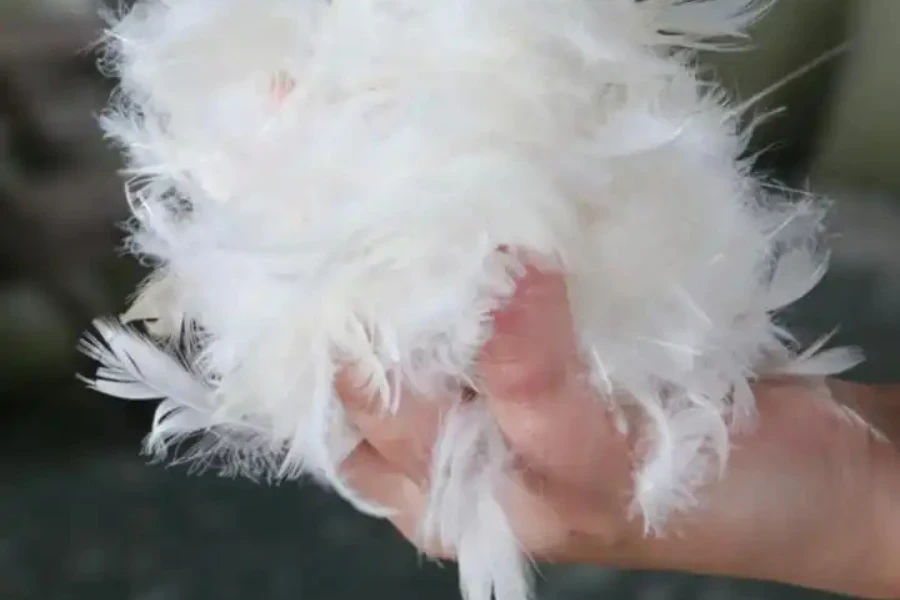
Similar to down fillers, feather fill comes from ducks and geese. Due to allergic reactions, additional measures are taken when washing and sewing covers. These techniques reduce allergic reactions but add to the value of the pillow.
Because of the materials and labor, feather pillows are costly. These attributes frequently mean they are made for higher-income individual and commercial customers.
Down alternative pillow stuffings
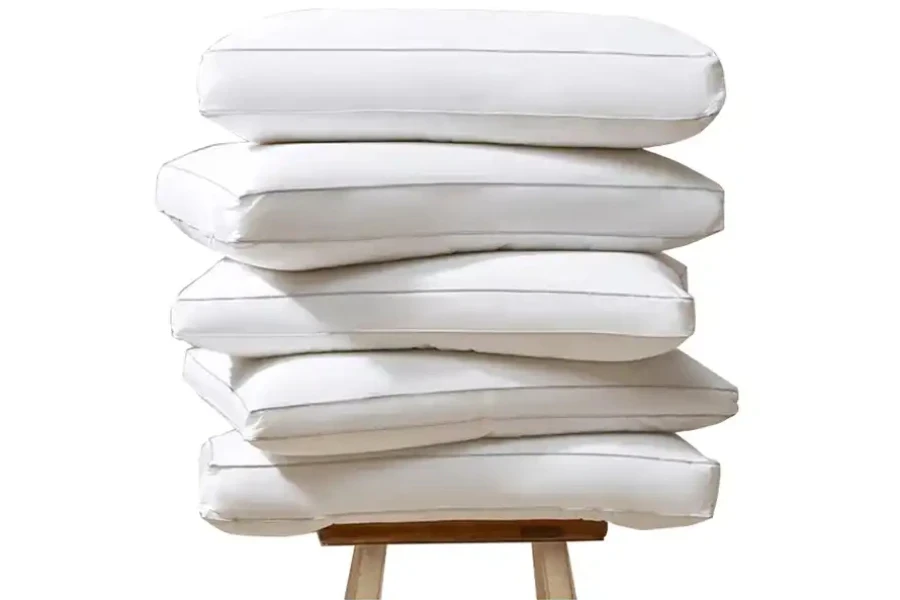
Down alternative pillows are essentially polyester microfibers but can sometimes contain rayon or cotton. A step up from the typical hollow fiber products, down alternative pillows are cooler and more breathable than down stuffing. The alternative synthetic materials are also lightweight products with differing lofts, firmness, and prices.
Polypropylene cotton pillows
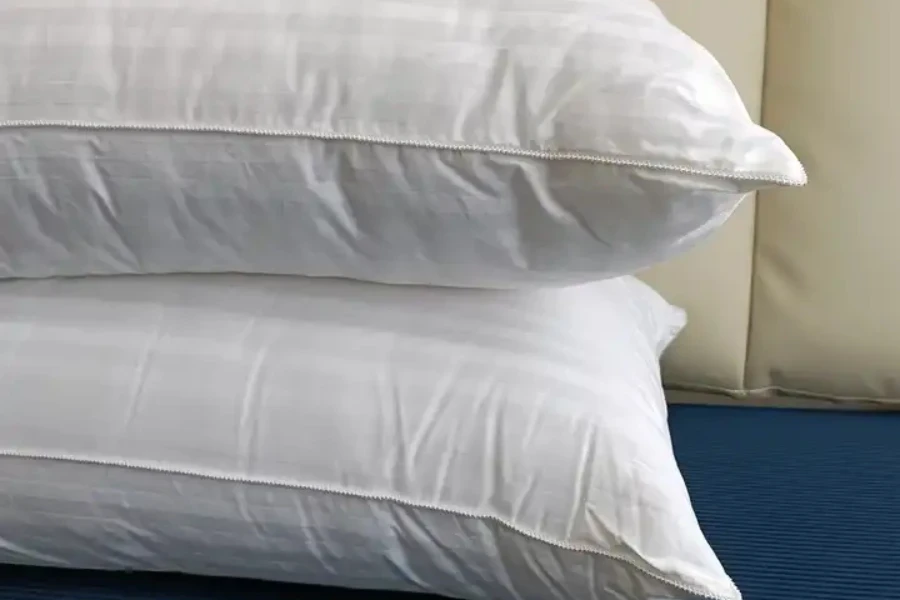
Organic cotton pillows are natural, hypoallergenic, breathable, cooling, and bouncy. However, they tend to lose their original shape over time due to compaction. Polypropylene cotton maintains its shape well. However, cotton does not, so mixing it with other textiles helps these pillows to maintain their shape and comforting plush feel.
Wool pillows
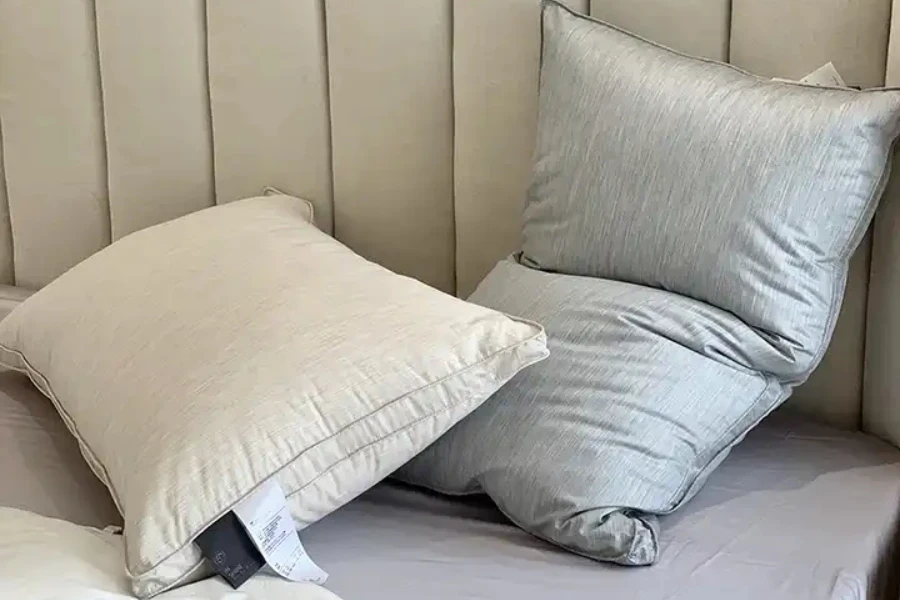
Another natural fiber for pillow fillings is wool. This material has excellent temperature-regulating properties, so it is warming in cool weather and cooling in warm weather. Wool stuffings tend to be more expensive than synthetic fillings, so they are better for medium to higher-income target markets.
Silk pillows
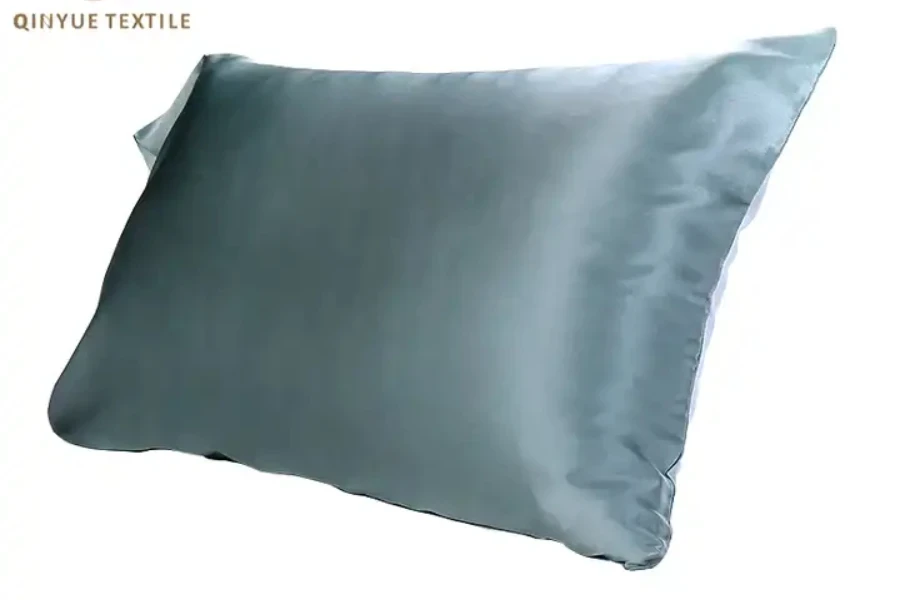
Like many organic materials, silk is also anti-allergenic, with temperature-regulating properties. Silk stuffings are also moisture-wicking, supportive, and incredibly luxurious and comfortable.
Surprisingly, these pillows are not as expensive as expected, so they are a good fit for most medium to high-income markets. Beware of cheaper imitations that use less silk and more of other textiles for bulking. Real mulberry silk pillow fillings clearly label the contents.
Buckwheat pillows
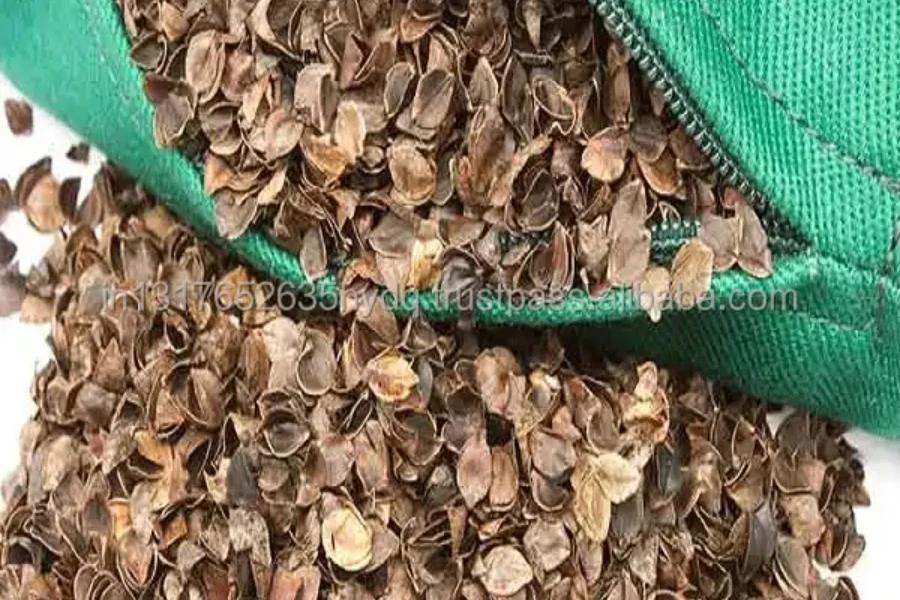
Made from buckwheat external hulls, these pillow stuffings are quite heavy. They are also firm and offer substantial support through the night. Built to last up to 20 years, buckwheat pillows are robust. They often have zippers for users to tailor the fill volume and loft.
Besides these qualities, buckwheat pillows are well-aerated and cooling. Still, some customers may not appreciate the constant rustling of buckwheat hulls in their ears during the night.
Kapok pillow filling
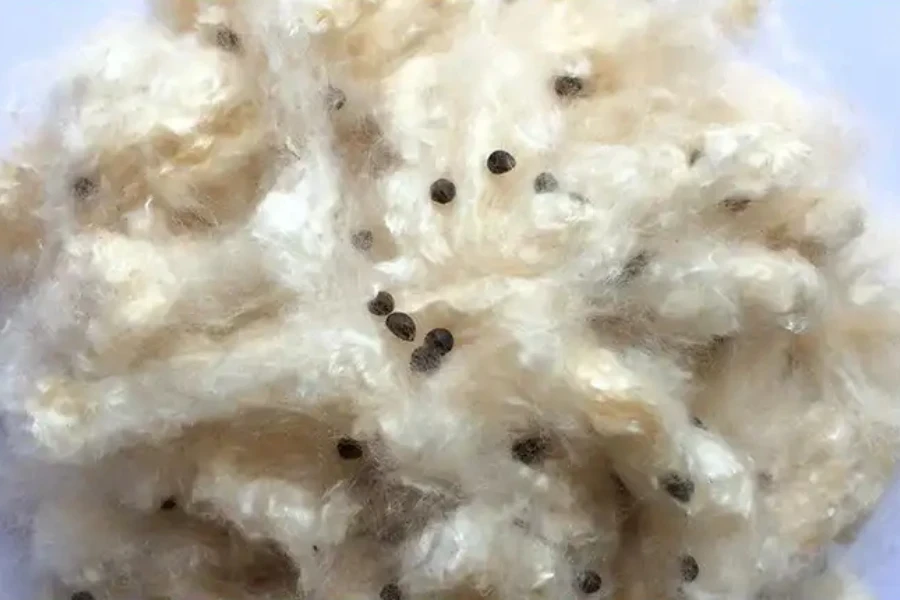
Like many other fibers, kapok is natural and comes from the seed of the kapok tree. They are an excellent eco-friendly stuffing choice but can be costly due to cultivation, kapok harvesting, and processing requirements.
But, kapok is silky soft like down, with the fibers producing a comfortable springy rest. Also, well-aerated kapok pillows are breathable, cooling, and moisture-wicking. Similar to cotton, they require regular fluffing to maintain their shape.
Microbead pillows
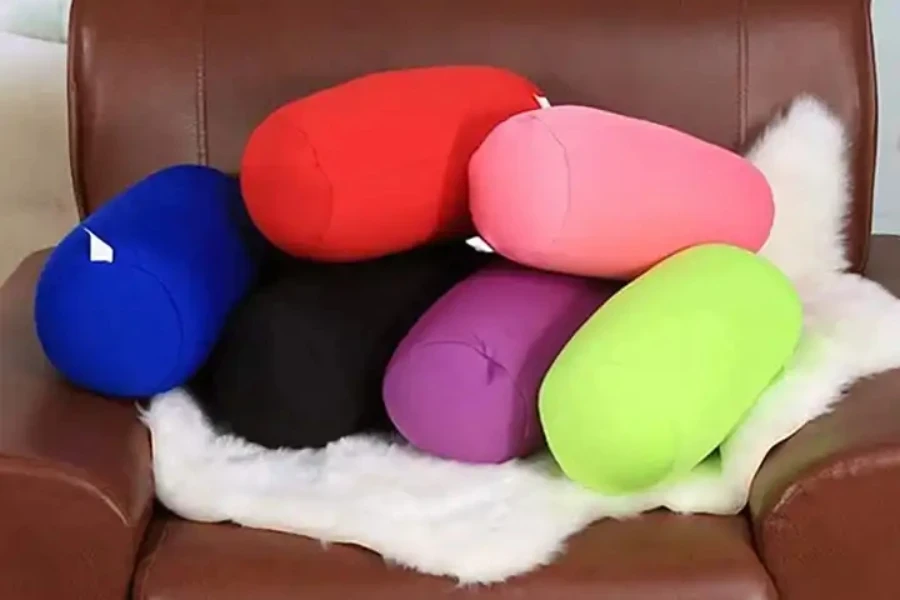
Manufacturers use polystyrene beads to stuff decorative bed pillows and travel pillows. Because microbeads are made from plastic, they can become quite warm. This warming effect is counterbalanced by gaps between the beads, encouraging airflow.
Microbead pillows typically conform well to head and shoulder shapes but are unsuitable for long-term sleeping due to their chemical makeup.
The bottom line
When sellers understand their pillow stuffings, they can provide a guide to customers. They can advise their markets on the suitability of specific products for differing purposes.
Some pillow stuffings are natural or synthetic. The materials of the fillings impact prices, ensuring sellers have enough variety to cater to various customers.
Visit the Chovm.com showroom to explore a range of quality pillow stuffings for individual and commercial customers.





 Afrikaans
Afrikaans አማርኛ
አማርኛ العربية
العربية বাংলা
বাংলা Nederlands
Nederlands English
English Français
Français Deutsch
Deutsch हिन्दी
हिन्दी Bahasa Indonesia
Bahasa Indonesia Italiano
Italiano 日本語
日本語 한국어
한국어 Bahasa Melayu
Bahasa Melayu മലയാളം
മലയാളം پښتو
پښتو فارسی
فارسی Polski
Polski Português
Português Русский
Русский Español
Español Kiswahili
Kiswahili ไทย
ไทย Türkçe
Türkçe اردو
اردو Tiếng Việt
Tiếng Việt isiXhosa
isiXhosa Zulu
Zulu